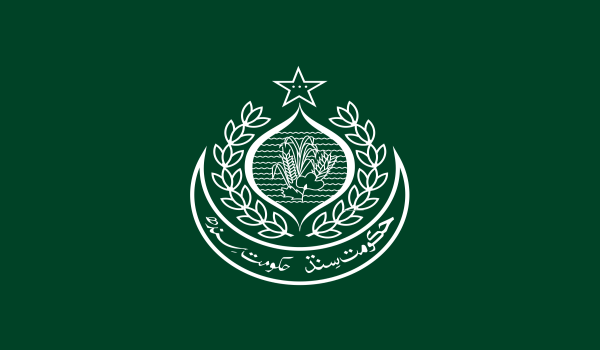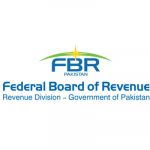 Property prices across some of the most popular areas in Lahore, Karachi, and Islamabad mostly remained stable during 2014, with little or no change in prices. Although there was steady buying and selling activity in the market, it did nothing to cause major spikes (or dips, for that matter) in property prices for the most part.
Property prices across some of the most popular areas in Lahore, Karachi, and Islamabad mostly remained stable during 2014, with little or no change in prices. Although there was steady buying and selling activity in the market, it did nothing to cause major spikes (or dips, for that matter) in property prices for the most part.
According to Zameen.com’s extensive statistical data, the housing sector around the country has performed steadily so far in 2014 in terms of sale and rental prices.
Mr Zeeshan Ali Khan, Co-Founder & CEO of Zameen.com, believes that the bearish trend in the market is because of the fact that prices rose too much in such a short span of time last year that they are now effectively outside of most people’s buying power.
“Prices cannot go on increasing forever,” he says. “The pre- and post-budget slump is likely to continue into Ramadan as well, which is generally a slow period for the property market in Pakistan. But 2014 is likely to end on a high – albeit a more controlled high than the preceding year – and growth is expected to remain within single digits.”
The following performance roundup of 2014 shows how the market has fared this month.
LAHORE TRUNDLES ALONG IN 2014
The year 2014 marked the start of a number of infrastructure development projects in Lahore – from overpasses and bridges to the construction and widening of roads in key areas of the city that the Punjab government has targeted for development work. Such rapid development generally triggers major jumps in property prices, but this was largely not the case in 2014.
DHA Lahore, which remains the city’s hottest locality and the address of choice for the rich and the famous, registered a spike of only 5.31% in prices of 1-kanal plots between January and May 2014. Such meagre rises are something of an anomaly for high-end societies such as DHA, which generally enjoy far higher increases in this sort of time span.
 Things were no different in Bahria Town, where 1-kanal residential plots only managed to register a 1.81% rise during the first five months of 2014. Prices of plots of the same size in Wapda Town, on the other hand, registered a 3.22% drop in 2014. LDA Avenue I, surprisingly, remained one of the few localities in Lahore where plots performed well.
Things were no different in Bahria Town, where 1-kanal residential plots only managed to register a 1.81% rise during the first five months of 2014. Prices of plots of the same size in Wapda Town, on the other hand, registered a 3.22% drop in 2014. LDA Avenue I, surprisingly, remained one of the few localities in Lahore where plots performed well.
The housing sector in Lahore was interestingly a better performer, and homes recorded much better numbers in both sale and rental prices during the year. One-kanal houses in DHA, for instance, showed increases of 7.72% and 18.19% in their sale and rental prices since January 2014 respectively. Similarly, houses of the same size in Bahria Town registered spikes of 9.41% and 17.50% in their sale and rental prices respectively during the same period of time.
 With rental prices increasing at a much faster pace than sale prices, Johar Town retained its place as the neighbourhood with the top rental yield in the city so far in 2014, at 5.28%. For DHA, Bahria Town Lahore and Cantt, the rental yields in 2014 were 4.36%, 4.12% and 3.78% respectively.
With rental prices increasing at a much faster pace than sale prices, Johar Town retained its place as the neighbourhood with the top rental yield in the city so far in 2014, at 5.28%. For DHA, Bahria Town Lahore and Cantt, the rental yields in 2014 were 4.36%, 4.12% and 3.78% respectively.
ISLAMABAD’S FAMOUS OUTLIER
Islamabad painted a mixed picture that hinted towards the fact that the capital’s market might have had a bit of a tilt towards polarisation in 2014 as, in stark contrast to some of the localities where there was hardly any buying and selling recorded, there were neighbourhoods that performed brilliantly in terms of property prices.
One such area has been Islamabad’s famous outlier Sector F-11, where prices have been consistently inching up. F-11, which is currently one of the hottest CDA sectors and has been performing well throughout 2014, continued its upward journey in May as well. While the Federal Budget 2014-15 brought every other notable area’s property market close to a halt, prices of 1-kanal plots in F-11 continued to climb and registered an 18.75% increase in 2014.
 In Bahria Town Islamabad, however, things looked very different. Property prices in the community, which is generally perceived as ‘hot’ and was the epicentre of a major chunk of all the activity in 2013, prices seem to be cooling down. With a 14.68% drop in the sale prices of 1-kanal plots, it is safe to assume that the focus of investors has clearly shifted from Bahria Town. Sector E-11, another popular area, reacted to the Federal Budget with a small 1.07% drop in prices of 1-kanal plots.
In Bahria Town Islamabad, however, things looked very different. Property prices in the community, which is generally perceived as ‘hot’ and was the epicentre of a major chunk of all the activity in 2013, prices seem to be cooling down. With a 14.68% drop in the sale prices of 1-kanal plots, it is safe to assume that the focus of investors has clearly shifted from Bahria Town. Sector E-11, another popular area, reacted to the Federal Budget with a small 1.07% drop in prices of 1-kanal plots.
Islamabad’s housing market has fared better in terms of both sale and rental prices. The value of 1-kanal houses in Sector F-11 has increased by 4.00%, whereas rental prices rose 6.79%. The biggest rise in rental prices was noticed in E-11, where average rent for a 1-kanal house jumped from Rs 186,800 in January 2014 to Rs 198,333 in May 2014, a 6.17% increase. The rental yield for all the above mentioned sectors hovered around the 3.60% mark.
 KARACHI’S PROPERTY BATTLEGROUND
KARACHI’S PROPERTY BATTLEGROUND
Bahria Town Karachi has been the highlight of the year in Pakistan’s largest city and economic hub, tearing away investors’ focus from DHA City and leaving a dent in its property prices. Zameen.com’s statistics show that the value of 500 sq yard plots in DHA City suffered a blow of Rs 269,905 within two short months from January 2014 to February 2014. It took DHA City a few months to make a comeback and the prices of 1-kanal plots registered an 11.07% increase by May 2014. Bahria Town Karachi has steadily gained momentum and has eventually drawn investors from all over Pakistan – some experts believe that it is partially responsible for the general slowdown in property markets in other cities of the country.
Bahria Town Karachi has steadily gained momentum and has eventually drawn investors from all over Pakistan – some experts believe that it is partially responsible for the general slowdown in property markets in other cities of the country.
Unlike DHA City however, investment in Bahria Town was largely based around registration forms, which ended up giving investors good short-term returns as the average price for forms jumped from Rs 110,000 to Rs 170,000 in a matter of days.
Elsewhere in the city, other more established housing societies such as DHA Karachi, Gulshan-e-Iqbal and Gulistan-e-Jauhar saw steady rises in plot prices. One-kanal plots in DHA Karachi registered average price increases of 9.89% between January 2014 and May 2014, while their counterparts in Gulshan-e-Iqbal and Gulistan-e-Jauhar saw price increases of 7.69% and 2.02% respectively.
WHAT TO EXPECT IN AND AFTER RAMADAN
In all likelihood, the market is going to remain cool in Ramadan. The bearish trend that we have seen post-budget is not going to change course immediately, but things are likely to gradually pick up steam in the coming months on the back of increased investment now that the budget has been announced. The monetary influx around Eid as a result of overseas Pakistanis coming home is also going to play a part in kick-starting the market.









Very calculative analysis. G.R.E.A.T